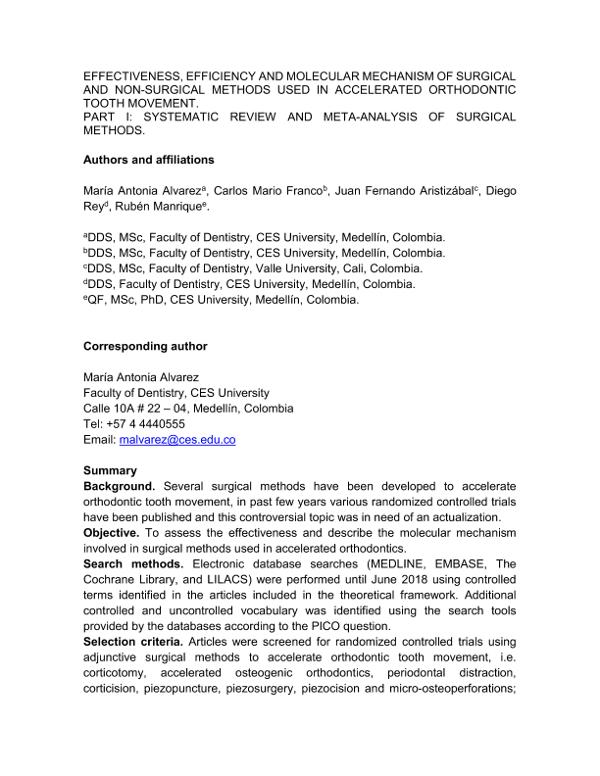Abstract
Objective. To assess the effectiveness and describe the molecular mechanism
involved in surgical methods used in accelerated orthodontics.
Background. Several surgical methods have been developed to accelerate
orthodontic tooth movement, in past few years various randomized controlled trials
have been published and this controversial topic was in need of an actualization.
Objective. To assess the effectiveness and describe the molecular mechanism
involved in surgical methods used in accelerated orthodontics.
Search methods. Electronic database searches (MEDLINE, EMBASE, The
Cochrane Library, and LILACS) were performed until June 2018 using controlled
terms identified in the articles included in the theoretical framework. Additional
controlled and uncontrolled vocabulary was identified using the search tools
provided by the databases according to the PICO question.
Selection criteria. Articles were screened for randomized controlled trials using
adjunctive surgical methods to accelerate orthodontic tooth movement, i.e.
corticotomy, accelerated osteogenic orthodontics, periodontal distraction,
corticision, piezopuncture, piezosurgery, piezocision and micro-osteoperforations;
with the following primary outcome measures: velocity of tooth movement; distance
of accumulated tooth movement; total treatment time; and levels of inflammatory and
bone remodeling markers in saliva or gingival crevicular fluid.
Data collection and analysis. Two independent authors evaluated the included
articles using a standardized form to extract data, including quality indicators. Risk
of bias was assessed using the Cochrane risk of bias tool.

